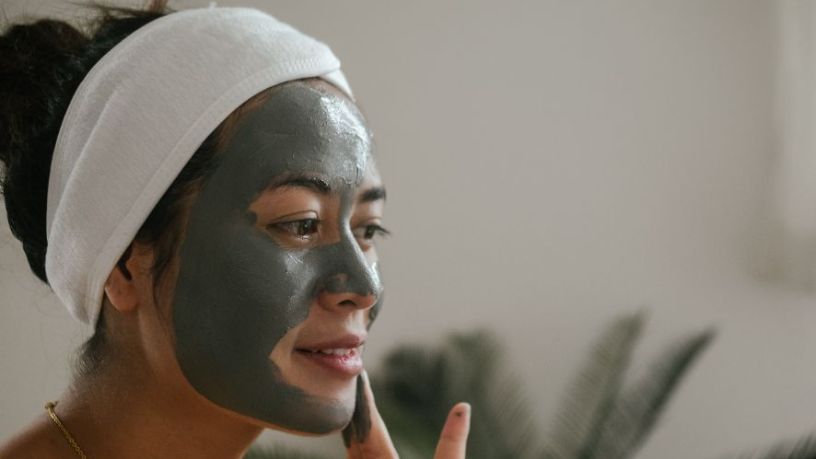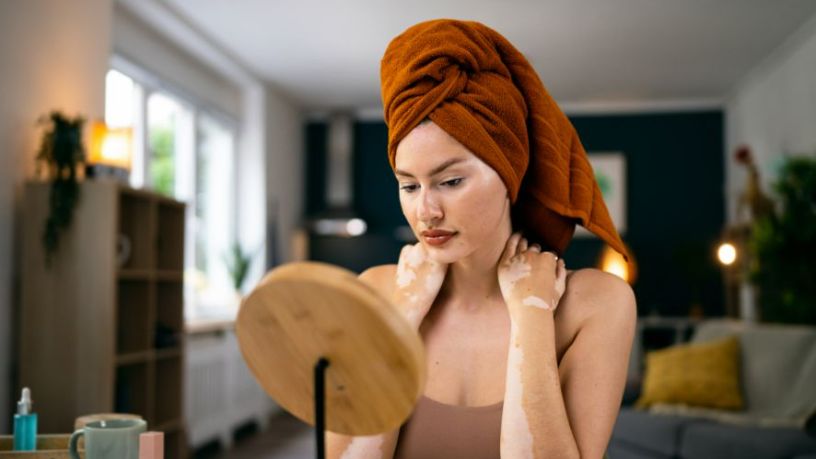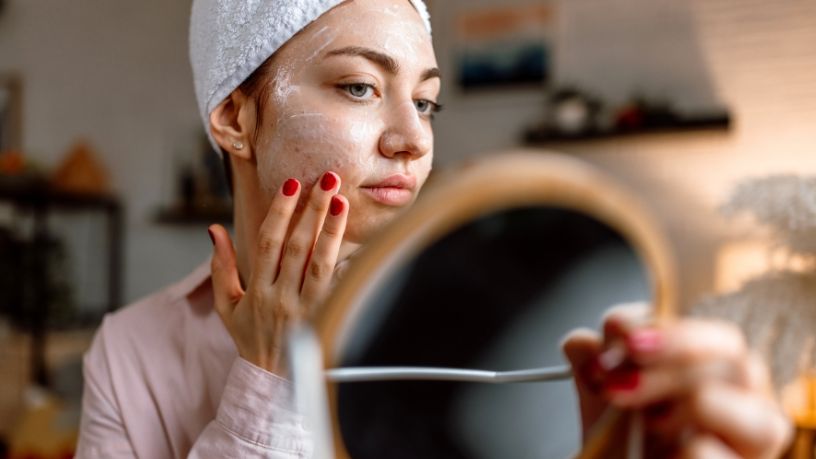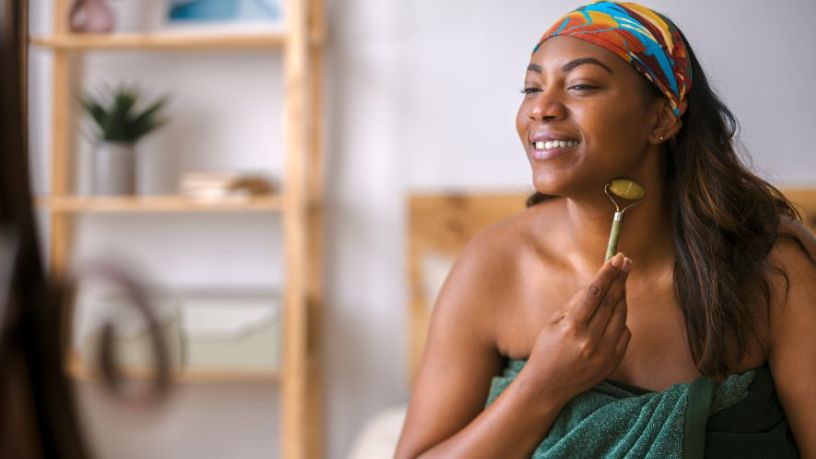There are small, mostly harmless doses of toxins in our skincare and cosmetics but avoiding chemicals when we can is always a good idea.
On this page
Key takeaways
Some chemicals in popular products can increase our risk of health conditions including fertility problems, respiratory illness and even some cancers.
Familiarise yourself with the chemicals you’re not comfortable with and then check labels and ingredients before you buy.
We’ve heard of clean eating and clean living, and now there’s a lot of hype around clean beauty. If you’re not already on the bandwagon, you might be wondering if you should tidy up your beauty routine.
But what does ‘clean beauty’ even mean? And is it more hype than help?
What is clean beauty?
Clean beauty is an unregulated term which has been left in the hands of brands to define and consumers to decipher.
Like the low tox movement, the idea is essentially to shift away from products that use chemicals that are believed to harm people and the planet.
As consumers become savvier about potentially harmful chemicals in beauty products, many manufacturers are creating alternatives without the concerning ingredients.
There’s no official list of chemicals to avoid, but many ‘clean beauty’ products are free from:
- parabens
- fragrances
- phthalates
- aluminium compounds
- ethoxylated agents
- triclosan.
While the chemicals that we’re exposed to in skin products come in tiny doses, many have been shown to be dangerous when used in much higher doses. For many people, it’s simply not worth the risk.
What can these ingredients do to our health?
When you dig deeper into the ingredients list on the back of your products, it’s easy to understand why people are starting to avoid them.
Emerging research shows some common chemicals may contribute to everything from disrupting your hormones to affecting fertility and even some cancers.1
Australian authorities say the low dose exposure to these chemicals in personal care products generally isn’t harmful.2 But there are many who prefer ‘clean’ alternatives for peace of mind.
Parabens
A group of chemicals used to preserve products so that they don’t become spoiled by bacteria and mould. Parabens can mimic oestrogen in the body, and studies have noted possible links with reproductive health problems, thyroid, obesity and hormone related cancers.3
Most authorities say that parabens are safe to use in cosmetics, but concentration limits are enforced in some countries, and experts advise against using multiple paraben-containing products.
Fragrances
Chemicals that create fragrance in products have multiple health risks including causing or exacerbating the symptoms of allergies, respiratory issues (such as asthma) and cardiovascular problems. In high doses, fragrance chemicals can promote some cancers, developmental issues and neurological conditions.4
Phthalates
These hormone disruptive chemicals are used to make the colour and fragrances in beauty products last longer. Animal studies link exposure to early onset of puberty, problems with male reproductive development and fertility, and decreased testosterone.5 They can also disrupt thyroid function and have been linked to obesity.5 Because of these concerns, several phthalates have been banned from cosmetics in Australia.
Aluminium compounds
Used as a pigment and thickening agent in deodorant, toothpaste and lipstick, aluminium compounds may cause skin irritation and could be linked to breast cancer, breast cysts and Alzheimer's disease.6
Ethoxylated agents
Ethoxylation is a chemical process used in bubbly products such as body wash, cleaners, shampoo, toothpaste and bubble bath liquid. The ethoxylation process can leave behind small traces of carcinogens which cause cancer.7
Formaldehyde
Used as a preservative in skin care and beauty products, high exposure is linked to sensory and skin irritation, asthma and breathing issues, and cancer.8
Triclosan
This antibacterial agent is used in some soaps, deodorants, toothpastes and other cosmetics. Animal tests have found that triclosan disrupts hormones.9 There are also concerns that it may contribute to antibiotic resistance, that it’s bio-persistent in the environment and is highly toxic to aquatic life.10
Is clean beauty better?
It’s important to read the label on any product you buy if you’re trying to avoid specific ingredients. Products claiming to be ‘clean’ may still contain chemicals and animal products.
The same goes for products posing as ‘organic’. Only labels with an organic certification logo are truly organic.
Green products focus more on what’s good for the planet and can be plant-derived, cruelty-free, vegan and more. However, always check the ingredients as ‘green’ isn’t a regulated term and products can still contain some of the toxins listed here.
4 steps to cleaner beauty
1. Be aware
Get to know the ingredients you’re uncomfortable with and which products you use that contain them.
2. Read labels
Be discerning when you read labels, knowing that ‘natural’ doesn’t mean non-toxic and ‘green’ is not the same as clean. Make sure the chemicals you’re concerned about aren’t hidden in your favourite products.
3. Start with the big things
If you’re ready to make a change, consider starting with the products you use the most of, like deodorant, shampoo and sunscreen. That way you’ll make the most impact in reducing exposure.
4. Find clean beauty brands that you love
Avoid all the hassle of reading labels by finding a reputable clean beauty brand or brands you like and trust.

At Bupa, trust is everything
Our health and wellbeing information is regularly reviewed and maintained by a team of healthcare experts, to ensure its relevancy and accuracy. Everyone's health journey is unique and health outcomes vary from person to person.
This content is not a replacement for personalised and specific medical, healthcare, or other professional advice. If you have concerns about your health, see your doctor or other health professional.
1Martín-Pozo, L., del Carmen Gómez-Regalado, M., Moscoso-Ruiz, I., & Zafra-Gómez, A. (2021). Analytical methods for the determination of endocrine disrupting chemicals in cosmetics and personal care products: A review. Talanta, 234, 122,642.
2Therapeutic Goods Administration. (2019). Consultation: Review of chemical scheduling in relation to cosmetic and fragrance ingredients. Australian Government, Department of Health and Aged Care.
3Nowak, K., Ratajczak-Wrona, W., Górska, M., & Jabłońska, E. (2018). Parabens and their effects on the endocrine system. Molecular and Cellular Endocrinology, 474, 238-251.
4Rádis-Baptista, G. (2021). Do synthetic fragrances in personal care and household products impact indoor air quality and pose health risks?. Journal of Xenobiotics, 13(1), 121-131.
5Pagoni, A., Arvaniti, O. S., & Kalantzi, O. (2022). Exposure to phthalates from personal care products: Urinary levels and predictors of exposure. Environmental Research, 212, 113,194.
6Sanajou, S., Şahin, G., & Baydar, T. (2021). Aluminium in cosmetics and personal care products. Journal of Applied Toxicology, 41(11), 1704-1718.
7Campaign for Safe Cosmetics. (2022). Ethoxylated Ingredients. Campaign for Safe Cosmetics.
8Agency for Toxic Substances and Disease Registry. (2014). Medical Management Guidelines for Formaldehyde. Centers for Disease Control and Prevention.
9Campaign for Safe Cosmetics. (2022). Triclosan. Campaign for Safe Cosmetics.
10Sun, C., Zhang, T., Zhou, Y., Liu, Z., Zhang, Y., Bian, Y., & Feng, X. (2023). Triclosan and related compounds in the environment: Recent updates on sources, fates, distribution, analytical extraction, analysis, and removal techniques. Science of The Total Environment, 870, 161885.
You might also like...
Have you been greenwashed?
Natural and sustainable products are gaining popularity. But how can we know if a brand is the real eco deal or just green washing?
Natural vs organic skincare: What’s the difference?
What’s the difference between ‘natural’ and ‘organic’ skincare, and are these products really better for your face and the planet?
What is skin cycling?
If you’ve been scrolling through your socials lately, you might have noticed a new skincare routine making the rounds. But what exactly is skin cycling?
5 skincare mistakes to stop making today
From under-cleansing to over-exfoliating, we all make mistakes with our skin. Learn about how to treat your skin with the love and care it deserves.





